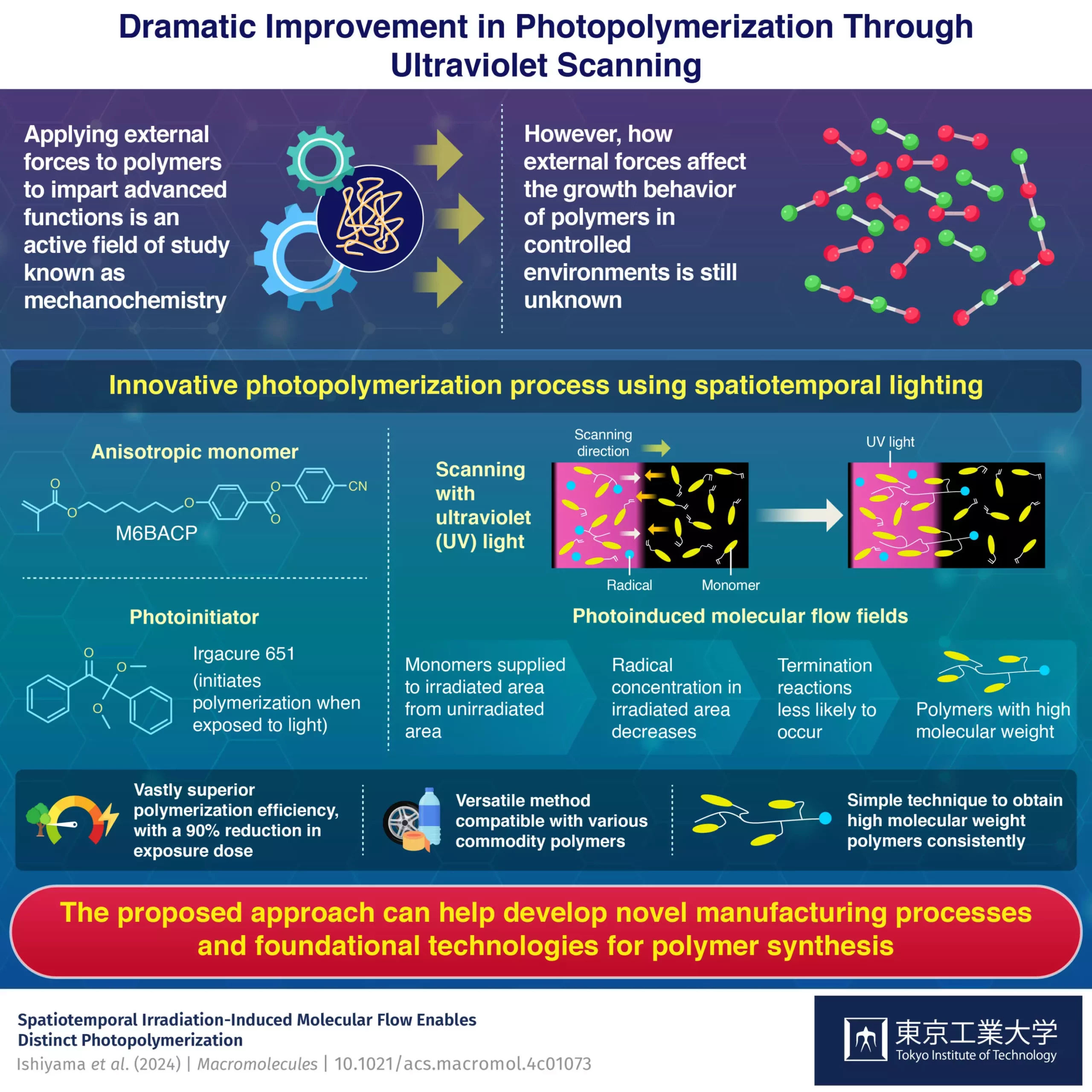Polymers have long been understood as materials consisting of long chains of molecules that determine their properties. Traditionally, external forces were believed to have a destructive impact on polymers, such as stretching leading to chain breakage. However, recent research has shown that external forces can actually have constructive effects on polymers, altering their properties and functionalities.
While the field of mechanochemistry has made significant progress in understanding how external forces can influence polymers, there is still much to learn about their growth behavior. A team of researchers at the Tokyo Institute of Technology, led by Professor Atsushi Shishido, embarked on a study to explore how flow fields induced by dynamic UV lighting can impact the process of photopolymerization.
In their study published in Macromolecules, the researchers investigated the photopolymerization reaction using M6BACP as a monomer and Irgacure 651 as a photoinitiator. Instead of uniformly irradiating the solution with UV light, they shone the light through a moving slit. This simple technique led to the production of high molecular weight polymers with a significant reduction in the required exposure dose.
The researchers theorized that UV light induced molecular flows within the solution, causing growing polymers to diffuse towards the unirradiated area where radicals were available. Additionally, radicals and monomers diffused, with radicals supplied to the unirradiated area and monomers to the irradiated area. This diffusion process led to a lower radical-to-monomer concentration in irradiated areas, preventing premature termination reactions and limiting the length of polymer chains.
The study not only provides insights into photopolymerization reactions but also presents a practical method for improving industrial processes and polymeric materials. By introducing movement to the UV light during polymerization, the researchers were able to enhance polymerization efficiency without altering existing compounds or reaction systems. This innovation has the potential to reduce the energy cost of photopolymerization in various industrial applications and could be applied to manufacturing processes for polymer synthesis.
The findings of this study have implications for the development of more sustainable and efficient methods for polymer synthesis. By understanding the influence of external forces, such as dynamic UV lighting, on polymer growth, researchers can work towards producing superior polymers with enhanced properties. This research opens up new possibilities for the manufacturing of high-quality polymers in a cost-effective and environmentally friendly manner.


Leave a Reply